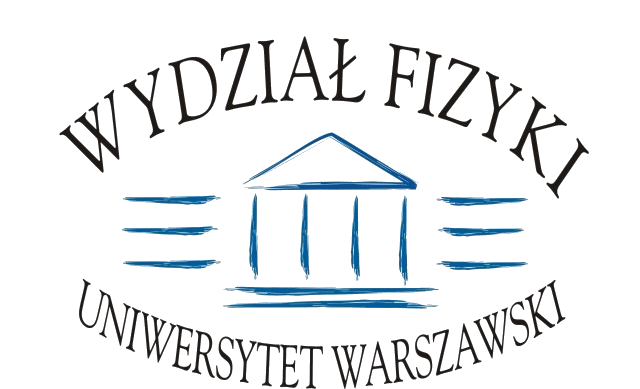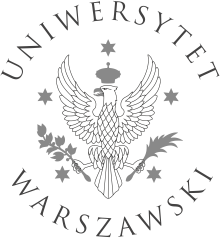Seminarium Teorii Oddziaływań Elementarnych
2006/2007 | 2007/2008 | 2008/2009 | 2009/2010 | 2010/2011 | 2011/2012 | 2012/2013 | 2013/2014 | 2014/2015 | 2015/2016 | 2016/2017
2016-03-21 (Poniedziałek)
Robert Zieger (Sorbonne Universites UPMC, Paris)
A fresh approach to Twin Higgs Models
Twin Higgs models give a concrete realization of the so-called "Neutral Naturalness" paradigm where no new colored states are necessary to stabilize the electroweak scale. After a review of the basic Twin Higgs mechanism, I will discuss supersymmetric UV completions and their model building issues. I will show that many features of Twin SUSY models such as the Higgs mass constraint and the electroweak symmetry breaking conditions can be discussed in a model-independent way. This analysis can be used to compare different implementations of the Twin SUSY idea and to identify new models with low fine-tuning and distinct phenomenological features.
2016-03-14 (Poniedziałek)
Ada Falkowski (IFT UW)
Phenomenology of the 750 GeV excess
LPT, Orsay
I will discuss the excess in the diphoton resonance searches by ATLAS and CMS at 750 GeV. A model independent characterization of the parameter space of the resonance will be presented. Different phenomenological possibilities concerning production and decay channels will be reviewed. Finally, I will comment on the possible embeddings of these phenomenological models in more complete scenarios for physics beyond the Standard Model.
2016-03-07 (Poniedziałek)
Stanisław Głazek (IFT UW)
Asymptotic freedom of gluons as effective particles
Asymptotic freedom of gluons is described in terms of a family of renormalized scale-dependent Hamiltonian operators that act in the Fock space. The Hamiltonians are calculated as functions of the scale by solving the new equation of so-called renormalization group procedure for effective particles (RGPEP) in the Yang-Mills theory [1]. The scale parameter has the interpretation of size of the effective gluons. The RGPEP equation is invariant with respect to boosts and may thus serve as a tool in attempts to simultaneously explain the parton and constituent models of hadrons or, more generally, the formation of bound states and mass generation in effective theories. The third-order asymptotically free solution to be discussed in the seminar prepares ground for higher order studies of renormalized Hamiltonians of QCD, while applications to other sectors of the standard model await development.
[1] M. Gomez-Rocha, S. D. Glazek, Phys. Rev. D 92, 065005 (2015).
[1] M. Gomez-Rocha, S. D. Glazek, Phys. Rev. D 92, 065005 (2015).
2016-02-29 (Poniedziałek)
(IFT UW)
odwolane
z powodu pogrzebu prof. Kiełczewskiej
2016-01-25 (Poniedziałek)
Anna Kamińska (UJG Mainz)
Testing dark matter coannihilation at the LHC
I will present a general classification of simplified models of dark matter coannihilation and discuss the main phenomenological features of these models. General classes of LHC signatures describing the full set of coannihilation models will be discussed and several novel signatures that are not covered in current LHC searches will be emphasized.
2016-01-18 (Poniedziałek)
Marek Karliner (Tel-Aviv University)
Pentaquarks, doubly heavy exotic mesons and baryons and how to look for them
I discuss the experimental evidence for and theoretical interpretation of the new mesons and baryons with two heavy quarks. These include doubly-heavy baryons, exotic hadronic quarkonia and most recently a manifestly exotic pentaquark-like doubly heavy baryon with minimal quark content uudc-bar discovered by LHCb, whose mass, decay mode and width are in agreement with a prediction based on a physical picture of a deuteron-like ΣcD*-bar „hadronic molecule”.
2016-01-11 (Poniedziałek)
Wojciech Florkowski (IFJ)
Quark-gluon plasma and relativistic heavy-ion collisions
In the first part of the seminar I will present two concepts of the quark-gluon plasma: first as an asymptotic state of strong interactions (achieved at extreme temperatures and/or densities), second as a new state of matter established experimentally in heavy-ion collisions. Then, I will turn to the discussion of relativistic hydrodynamics and its role in the determination of properties of the new phase. Finally, I will present recent developments of dissipative relativistic hydrodynamics, comparing various computational schemes with the predictions of the underlying kinetic theory.
2015-12-21 (Poniedziałek)
(IFT UW)
cancelled
2015-12-14 (Poniedziałek)
Drazen Glavan (IFT UW)
Late-time quantum backreaction in cosmology
Quantum fluctuations generated in the early Universe inflationary periodhave an energy-momentum tensor associated to them. This, in principle,represents an aditional source - quantum backreaction - to the (semiclassical) Einstein's equation, on top of the classical background fluids driving the expansion. There are models in which the backreaction from quantum fluctuations eventually, during the expansion of the Universe, becomes comparable to the background fluids driving the expansion, in which case one expects considerable deviations from the classical GR dynamics. I will present some scalar field models in which quantum fluctuations exhibit this behaviour. For certain ranges of model parameters backreaction remains small throughout the history of the expansion (inflationary era and radiation era) and becomes comparable to the background fluid only in late-time matter era. When it becomes important, the backreaction constitutes a cosmological constant type contribution, making it a possible dark energy candidate.
2015-12-07 (Poniedziałek)
Scalars 2015
Instead of a seminar we invite you to attend the Scalars 2015 conference. For info please visit the page http://scalars2015.fuw.edu.pl
Stron 2 z 3






